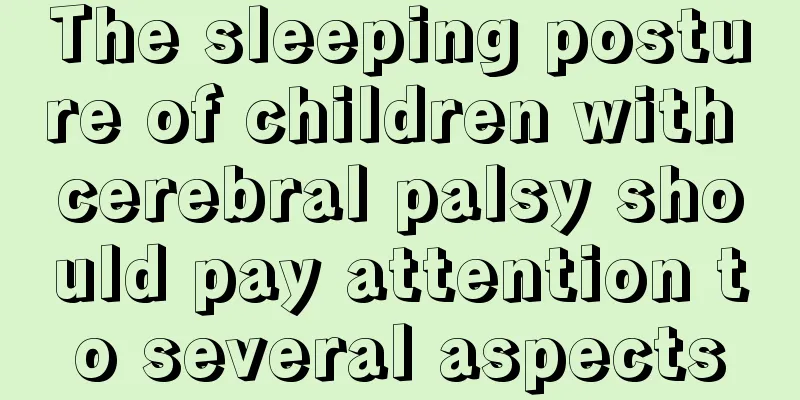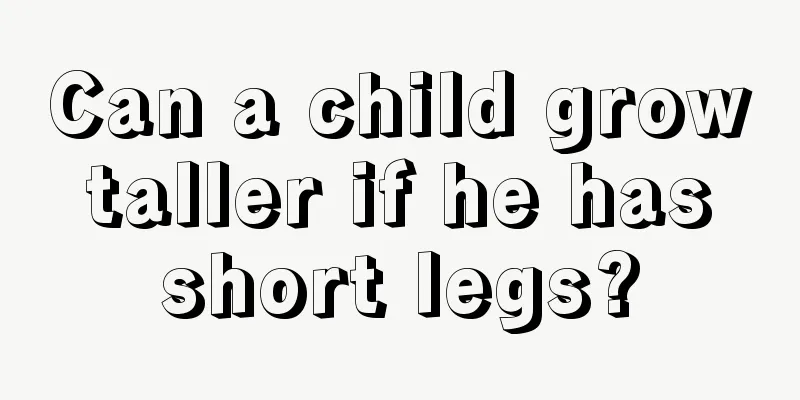The sleeping posture of children with cerebral palsy should pay attention to several aspects

|
The sleeping posture of children with cerebral palsy is different from that of normal children. If the child adopts a side-lying position, you can put some bright toys in front of the child to stimulate his senses. If the child with cerebral palsy mainly stretches his body and limbs, you can put the child in a special hammock. 1. Children who adopt the side-lying position can put their hands in front of their bodies more easily. Some brightly colored toys can be placed in front of the children to stimulate their senses. For children with athetosis, tension disappears during sleep, limbs move more, and it is difficult to cover themselves with a quilt. Therefore, they can wear long-sleeved pajamas or fix the corners of the quilt to the edge of the bed. For children with severe flexion spasms, you can let them sleep in a prone position, put a low pillow on their chest, and stretch their arms forward. After a period of time, when the child's head can be lifted forward or turned, you can remove the pillow and let them sleep in a prone position. 2. For children with cerebral palsy whose bodies and limbs are mainly stretched, especially infants and young children, the children can be placed in a special hammock. Sleeping in the middle of the hammock can improve the stretching of the trunk and limbs and help the children keep their heads in the middle. At the same time, placing some toys above the hammock can expand the child's field of vision and is beneficial to the exercise of upper limbs and hands. 3. Due to the tension in the neck, it is difficult for children with cerebral palsy to keep their heads in the center, and the heads are often tilted to one side. When lying in bed, the heads are tightly pressed against the pillow. Maintaining abnormal posture for a long time will cause deformation of the spine and affect the normal development of children with cerebral palsy. How to train children with cerebral palsy to have the correct sleeping position? Through the above introduction, everyone should have some understanding of this aspect of training. Especially for children with cerebral palsy who have incorrect sleeping posture, parents must actively train their sleeping posture, hoping that children with cerebral palsy can grow up healthily and live a quality life. |
<<: Autism treatment, pay attention to behavioral therapy!
>>: When children wear glasses, these things should be kept in mind!
Recommend
Why is my 2-year-old baby itchy?
We all know that when babies are young, their bod...
What are the dietary treatments for baby runny nose?
After a child falls ill, many parents are at a lo...
What should I do if my child has a fever and diarrhea?
Nowadays, various diseases are often seen, especi...
How soon can babies swim?
With the continuous improvement of living standar...
Is sinusitis serious in children?
Sinusitis is the medical name for an acute rhinit...
Teenagers often have nosebleeds
Teenagers aged 14 and 15 are a group that likes t...
Two-year-old baby hits the back of his head
If a two-year-old baby hits the back of the head,...
What is the height and weight of a one year and ten month old baby?
Children are constantly developing, growing and c...
Does a child need surgery for appendicitis?
Appendicitis in children is also relatively commo...
What should children eat to grow taller?
Some parents are very worried about their childre...
Can children eat watermelon when they have a high fever?
Children will always encounter health problems of...
White spots on children's fingers
The phenomenon of white spots on children's f...
What are the signs that a four-month-old baby is smart?
It is not an easy thing for a woman to get pregna...
What to do if your child has a fever of 39 degrees
When talking about the thing that bothers parents...
Introduction to viral pneumonia in children
Fever, cough, shortness of breath and dry nose ar...









